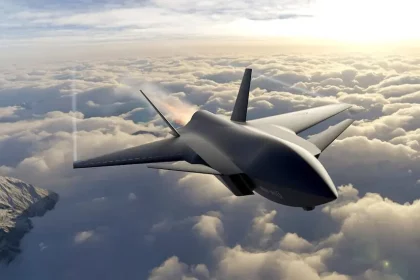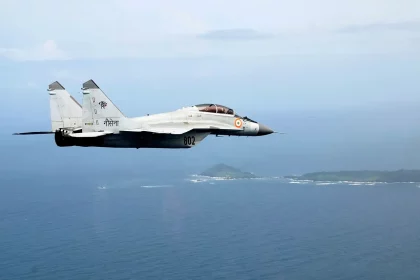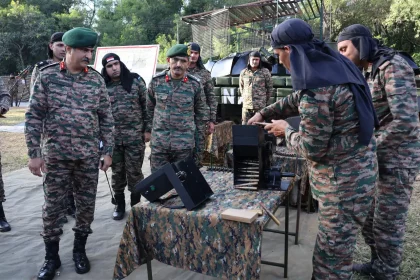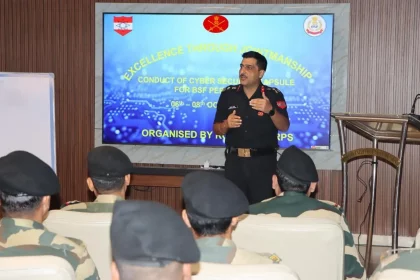DRDO Completes Preliminary Design Review for Futuristic Unmanned Fighter Aircraft, Begins Wind Tunnel Testing
DRDO begins wind tunnel testing for India’s next-generation unmanned fighter aircraft after completing Preliminary Design Review.
Indian Navy Commissions ‘Trinetra’ Static Firing Facility Near Visakhapatnam
‘Trinetra’ facility enhances India’s indigenous naval weapons testing capability, strengthening operational readiness and self-reliance.
MiG-29K to Test-Fire Indigenous NASM-MR in Upcoming Naval Trials
Indigenous medium-range anti-ship missile completes MiG-29K integration; flight trials to validate carriage, separation and seeker performance ahead of operational qualification.
Lt Gen Rajesh Pushkar Reviews Operational Preparedness of Black Arrow Brigade
Kharga Corps Commander lauds Black Arrow Brigade for professionalism, innovation, and high operational readiness.
Konark Corps Conducts Joint Cyber and Information Security Training for BSF in Jodhpur
Konark Corps and BSF collaborate to strengthen cyber awareness and safeguard digital assets in a multi-agency training program at Jodhpur.
15 Pakistani Soldiers Killed as Taliban Retaliates After Kabul Airstrikes
Tensions Escalate Along Durand Line as Taliban Claims Capture of Pakistani Outposts After Retaliatory Attacks.






